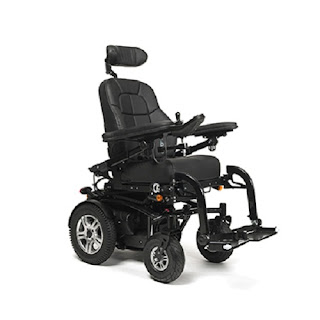The Impact of Mobility Equipment on Daily Living: Enhancing Accessibility and Comfort
Today’s quest for independence and comfort is more attainable than ever, thanks to advancements in mobility equipment & services.
These tools and support systems are transforming lives, making daily activities easier and more accessible.
This blog explores how mobility equipment impacts daily living, enhancing accessibility and comfort.
Understanding Mobility Equipment & Services
Mobility equipment & services encompass a wide range of products and support systems designed to aid individuals with physical limitations or disabilities.
This includes everything from wheelchairs and scooters to walkers, lift chairs, and custom aids.
The goal of mobility equipment is to assist users in maintaining their independence, mobility, and overall quality of life.
Mobility services, on the other hand, refer to professional support provided to individuals using these devices.
This can include assessments, repairs, and customisation of equipment to ensure it meets the user's specific needs.
The combination of advanced mobility equipment and dedicated services plays a crucial role in enhancing daily living for many people.
Enhancing Accessibility Through Mobility Equipment
One of the primary benefits of mobility equipment is its ability to enhance accessibility. For individuals with mobility challenges, navigating spaces can be a significant hurdle.
Mobility aids such as wheelchairs, scooters, and stairlifts are designed to overcome these barriers, allowing users to easily move around their homes and communities.
Wheelchairs and scooters are particularly effective in improving accessibility. Modern wheelchairs are lightweight and highly manoeuvrable, allowing users to navigate tight spaces and uneven terrain.
On the other hand, electric scooters offer a comfortable ride for longer distances, making it easier for individuals to travel independently.
Stairlifts and ramps are other critical components of mobility equipment that enhance accessibility within the home.
Stairlifts enable individuals to move between different levels of their homes safely, while ramps provide easy access to doorways and other entry points.
These features are essential for maintaining mobility and independence, particularly for those with difficulty climbing stairs or navigating steps.

Improving Comfort with Advanced Mobility Aids
Comfort is another significant factor that mobility equipment addresses. The design and functionality of these devices have evolved to prioritise user comfort, ensuring that individuals can use them for extended periods without discomfort or strain.
Power wheelchairs and scooters often come with adjustable seating and ergonomic designs to enhance comfort. These features help reduce pressure sores, prevent discomfort, and provide a more pleasant user experience.
Additionally, many modern mobility aids have suspension systems to absorb shocks and provide a smoother ride.
Lift chairs are another example of how mobility equipment enhances comfort. These chairs are designed to assist individuals in standing up and sitting down, reducing the physical strain associated with these actions.
Lift chairs can be especially beneficial for those with arthritis or other conditions that make sitting and standing difficult.
The Role of Mobility Services in Daily Living
While mobility equipment plays a crucial role in enhancing accessibility and comfort, the support provided by mobility services is equally important.
These services ensure that equipment remains in optimal condition and continues to meet users' evolving needs.
Assessment and customisation are fundamental aspects of mobility services. Professional assessments help determine the most suitable equipment for an individual’s needs, ensuring that the chosen device provides the necessary support and functionality.
Customisation options, such as adjusting seat height or adding specialised accessories, can further enhance the effectiveness of mobility aids.
Maintenance and repair services are also essential for ensuring mobility equipment remains reliable and safe.
Regular maintenance helps prevent malfunctions and extend the lifespan of equipment while prompt repairs address any issues that arise.
Access to these services ensures that individuals can continue to use their mobility aids without interruptions, maintaining their quality of life.
Real-Life Impact: Success Stories
To illustrate the impact of mobility equipment, consider the story of Sarah, a 65-year-old woman with limited mobility due to arthritis.
After receiving a custom assessment, Sarah was provided with an electric scooter that allowed her to navigate her neighbourhood and visit friends and family independently.
The scooter’s ergonomic design and adjustable features greatly improved her comfort, and regular maintenance ensured it remained in excellent working condition.
Similarly, John, a 72-year-old with mobility challenges following a stroke, benefited from the installation of a stairlift in his home.
This modification enabled him to access all areas of his house safely and comfortably, significantly enhancing his overall quality of life.
The mobility services provided included ongoing support and adjustments to ensure the stairlift continued to meet his needs.
Conclusion
Mobility equipment & services have a profound impact on daily living. By enhancing accessibility and comfort, these tools and support systems empower individuals to lead more independent and fulfilling lives.
Whether through advanced mobility aids or comprehensive support services, the goal remains to improve the quality of life for those with mobility challenges.
Investing in the right mobility equipment and accessing reliable mobility services can make a difference, transforming how individuals experience their daily activities and interactions.
As technology and services continue to advance, the possibilities for enhancing accessibility and comfort will only grow, further enriching the lives of those who rely on these vital resources.


Comments
Post a Comment